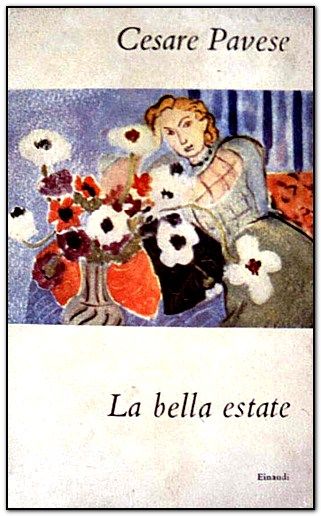Casa In Collina Pavese Pdf Editor 3,9/5 539reviews
In Torino in his native Piedmont, Pavese studied English and American literature and wrote a dissertation on Walt Whitman. He read and translated Defoe, Dickens, Joyce, Dos Passos, Stein and Faulkner and his version of Melville's, Moby Dick is a classic. Except for his book of poems Lavorare stanca (Work Wearies) (1936), Pavese's chief works are the novels The Comrade (1948), La Casa in Collina (The House on the Hill) (1949), Prima che il gallo canti (Before the Cock Crows) (1949), La bella estate (The Beautiful Summer) (1949), and his last and best, The Moon and the Bonfire (1952).

Sep 03, 2016 TNTforum - >Cesare Pavese - La casa in collina«La casa in collina»di. International Master Diagnostics Keygen Torrent. Cesare Pavese ~ Dettagli ~ Autore: Cesare Pavese. Titolo: 'La casa in collina'Anno: 1. Casa In Collina Pavese Pdf Writer. La Diocesi di Casale in lutto per la morte di don Achille Gogovor, 5. Ozzano e Sala, costretto poi ad abbandonare in quanto colto.

During World War II, he was head of the Rome office of the publishing house of Einaudi and, with Elio Vittorini, did much to encourage young writers. Although a member of the Communist Party, he had not joined the anti-Fascist resistance. Unhappy in love, unable to believe in Christ, and disappointed with things in postwar Italy, he finally made good on what he had often urged as the finest of 'final solutions' for himself, committing suicide after winning the coveted Strega Prize, for La bella estate.
On June 23rd, 1950, Pavese, Italy’s greatest modern writer received the coveted Strega Award for his novel Among Women Only. Usps Shipping Label 228 Template Resume. On August 26th, in a small hotel in his home town of Turin, he took his own life. Shortly before his death, he methodically destroyed all his private papers. His diary is all that remains and for this the contemporary reader can be grateful.
Contempo On June 23rd, 1950, Pavese, Italy’s greatest modern writer received the coveted Strega Award for his novel Among Women Only. On August 26th, in a small hotel in his home town of Turin, he took his own life.
Shortly before his death, he methodically destroyed all his private papers. His diary is all that remains and for this the contemporary reader can be grateful. Contemporary speculation attributed this tragedy to either an unhappy love affair with the American film star Constance Dawling or his growing disillusionment with the Italian Communist Party. His Diaries, however, reveal a man whose art was his only means of repressing the specter of suicide which had haunted him since childhood: an obsession that finally overwhelmed him. As John Taylor notes, he possessed something much more precious than a political theory: a natural sensitivity to the plight and dignity of common people, be they bums, priests, grape-pickers, gas station attendants, office workers, or anonymous girls picked up on the street (though to women, the author could-as he admitted-be as misogynous as he was affectionate). Bitter and incisive, This Business of Living is both moving and painful to read and stands with James Joyce’s Letters and Andre Gide’s Journals as one of the great literary testaments of the twentieth century.

